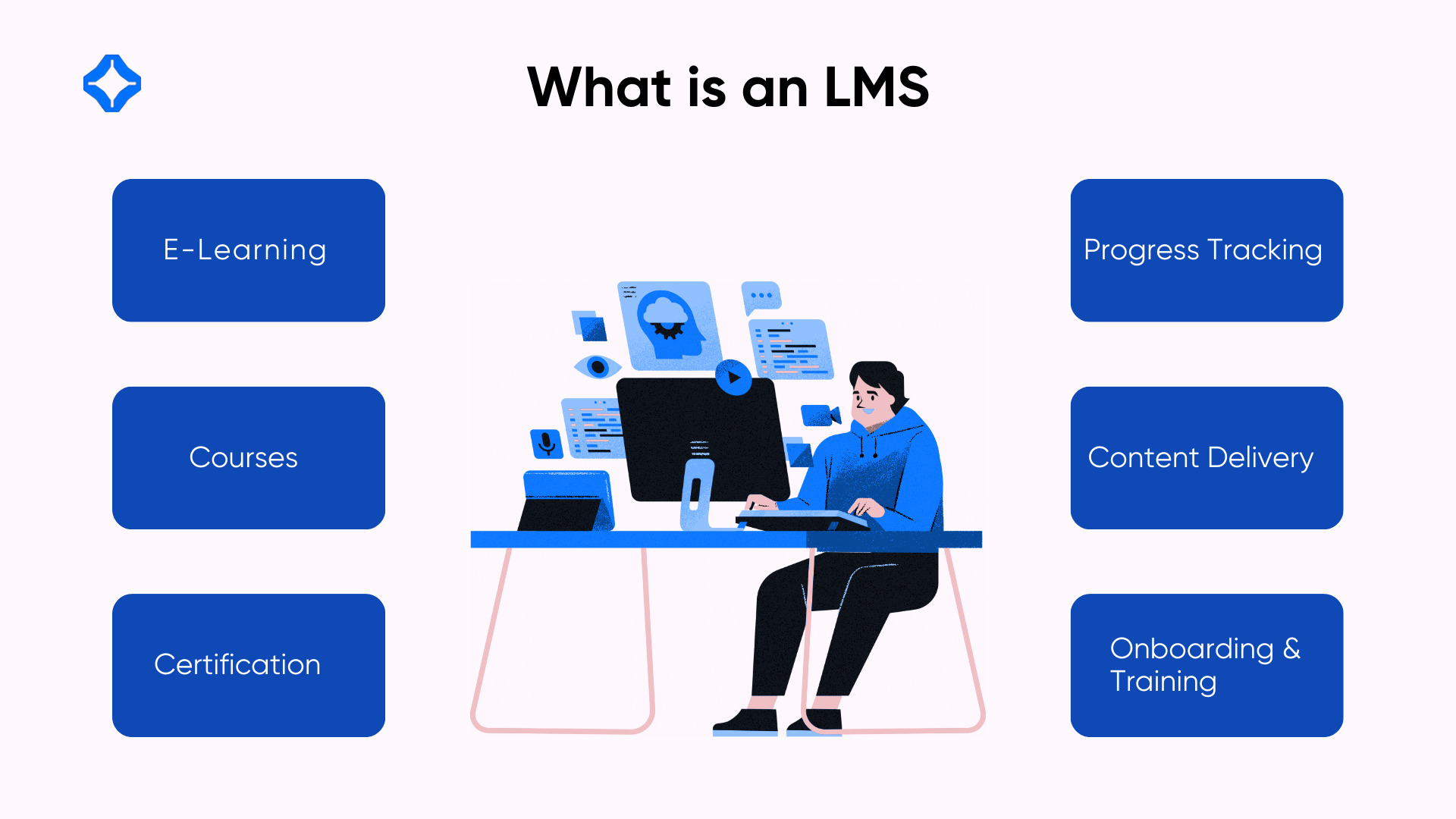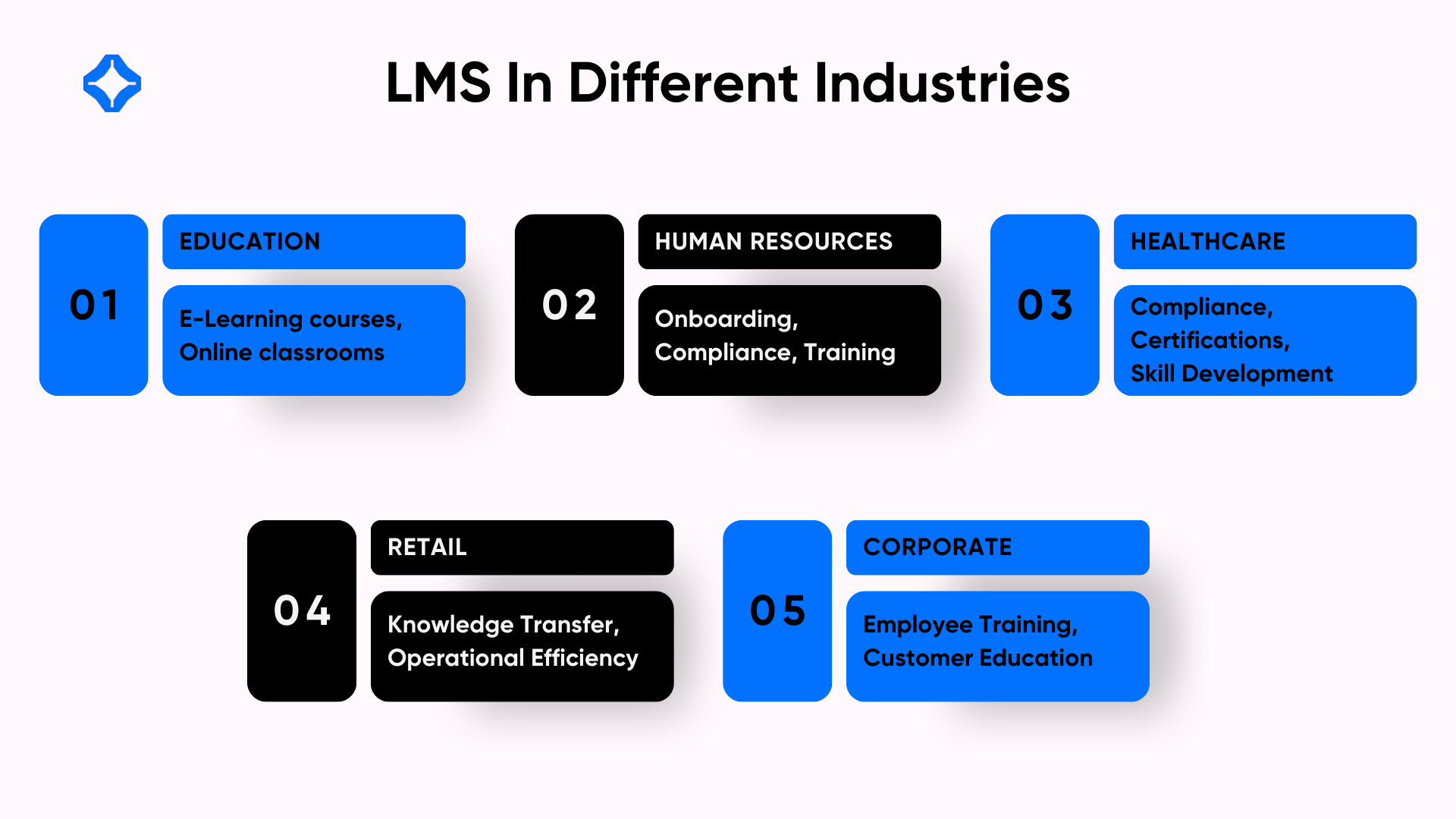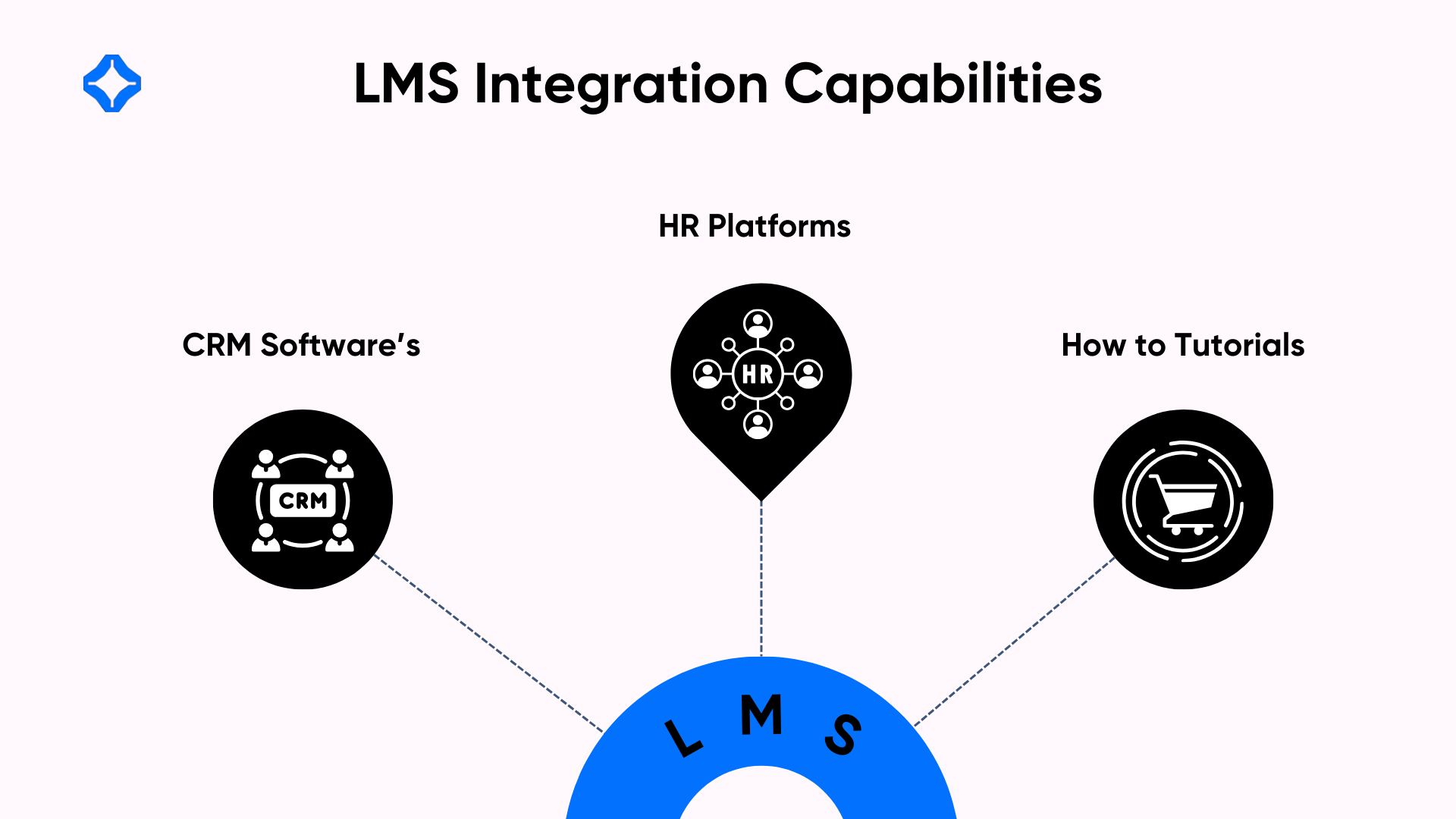A learning management system (LMS) is a platform designed to deliver, manage, and track training and educational programs. When paired with the SaaS model, LMS platforms gain more Accessibility, scalability, and ease of use.
This combination gives businesses and educational institutions a powerful tool to streamline training processes and improve outcomes. Understanding how LMS works in the SaaS model can unlock numerous benefits for organizations looking to enhance learning initiatives.
What is a Learning Management System (LMS)?

Definition of LMS
A Learning Management System (LMS) is a digital tool designed to organize, deliver, and track training and educational content. From corporate learning management systems to academic use, an LMS simplifies managing learning materials, improving the efficiency of training programs.
Common Features of LMS
A learning management system (LMS) is a powerful platform with various features designed to improve training and education. Some of the key features of LMS include:
User Management
LMS platforms offer user management tools that streamline access for learners and administrators. This includes creating profiles, assigning roles, and managing permissions for efficient control.
Content Delivery
Organizing and delivering training materials is central to an LMS. These platforms support multimedia content, quizzes, and assignments, meeting diverse learning preferences.
Progress Tracking and Analytics
LMS platforms provide tools to monitor learner progress, such as course completion rates and quiz scores. Built-in analytics help organizations measure training effectiveness by offering insights into learner engagement and performance.
Integration and Accessibility
Modern LMS platforms integrate seamlessly with CRMs, HR software, and learning content management systems (LCMS). Also, mobile compatibility ensures learners can access content anytime, anywhere.
Gamification and Reporting
Gamification features like leaderboards and badges motivate learners while reporting tools enable instructors to track results and make data-driven decisions.
Examples of LMS Use Cases
LMS platforms are adaptable and widely used in different sectors. Here are some common examples of LMS use cases:
Corporate LMS Systems
Companies use corporate learning management systems for onboarding and compliance training. Automation and reporting simplify these processes, ensuring efficiency.
LMS in Education
Academic institutions implement learning management systems in education to create blended or online learning environments. These platforms support course management, collaboration, and performance tracking.
Certification and Skill Development
Many IT and healthcare industries rely on LMS platforms for certification programs and skill-building courses. Assessments and structured content make them ideal for professional development.
Extended Enterprise Training
Organizations utilize LMS platforms for customer and partner education, helping external stakeholders understand products, services, and best practices.
What is the SaaS Model?
Definition of SaaS
The Software as a Service (SaaS) model delivers software applications to users over the Internet, eliminating the need for physical installation on devices. This cloud-based learning management system approach eliminates infrastructure challenges, reduces IT demands, and ensures software is always up to date.
Benefits of the SaaS Model
- Cost Efficiency: SaaS platforms eliminate upfront hardware costs, offering subscription-based pricing that is budget-friendly for businesses of all sizes.
- Scalability: The model supports seamless growth, making it ideal for companies with expanding user bases or increasing data requirements.
- Accessibility: With SaaS-based learning management systems, users can access learning materials from anywhere, anytime, and from any device, giving flexibility and convenience.
- Automatic Updates: SaaS platforms manage updates and maintenance seamlessly, providing users with uninterrupted access to the latest functionalities.
SaaS LMS Model in Different Industries

The SaaS model has revolutionized multiple sectors by simplifying software deployment and management. Here are a few examples:
Learning Management System in Education
Educational institutions utilize SaaS LMS platforms to deliver e-learning courses, manage student performance, and enable hybrid or online classrooms.
Human Resources (HR)
SaaS platforms in HR streamline training processes, onboarding, and compliance programs, enhancing employee engagement and productivity.
Healthcare Training
Hospitals and clinics adopt SaaS-based learning management systems for compliance training, skill development, and certifications, ensuring high-quality care.
Retail Training Systems
Retail businesses use SaaS solutions to train employees across locations, ensuring consistent knowledge transfer and operational efficiency.
Corporate Learning Management Systems
Businesses leverage SaaS LMS tools to provide employee training, leadership development, and customer education on a global scale.
Advantages of SaaS LMS Over Traditional LMS
No Installation Required
SaaS LMS platforms eliminate the need for on-premises hardware installation. Businesses can adopt these learning management systems instantly, offering a seamless plug-and-play experience. This reduces the time and resources spent on installation, making it suitable for companies of all sizes.
Automatic Updates
With SaaS-based learning management system platforms, updates occur automatically without requiring manual intervention. This ensures that the features of LMS platforms remain current, improving functionality and security without disrupting workflows.
Cost Savings
A SaaS LMS is more cost-effective than traditional LMS systems as it eliminates the need to purchase and maintain expensive hardware. Businesses only pay for what they use, making it an affordable solution for delivering LMS training and managing educational needs.
Global Accessibility
One of the key advantages of SaaS-based learning management systems is their ability to support global users. Whether it’s LMS training for remote teams or cross-border learning initiatives, SaaS LMS ensures learners and instructors can access training materials from anywhere, ensuring consistency and inclusivity.
Scalability and Flexibility
SaaS learning management systems for businesses adapt and scale alongside organizational growth. Whether scaling up to accommodate more users or adapting to new learning needs, these systems provide unmatched flexibility compared to traditional LMS platforms.
Enhanced Collaboration and Integration

SaaS LMS platforms often include collaboration tools and integrate seamlessly with other business applications, such as CRMs and HR platforms. This improves workflows and ensures a unified approach to LMS training and education.
Challenges of Using SaaS LMS
Internet Dependency
SaaS-based learning management systems require a reliable internet connection to function effectively. In regions with unstable or limited connectivity, learners and administrators may face interruptions during LMS training, affecting productivity and the overall learning experience.
Data Privacy Concerns
Handling sensitive information within learning management systems for businesses necessitates strict compliance with data protection regulations like GDPR, HIPAA, or regional equivalents.
Without proper security measures, these platforms may be vulnerable to breaches, raising concerns about the safety of learners and organizational data.
Subscription Costs
While SaaS LMS platforms reduce initial infrastructure expenses, recurring subscription fees can accumulate over time. For businesses with long-term LMS training needs, the cumulative costs of a SaaS-based learning management system might exceed the one-time investment in traditional LMS models, making budget management a critical consideration.
Limited Customization Options
Unlike self-hosted or on-premise learning management system platforms, SaaS LMS solutions often have limited customization capabilities. Businesses may find it challenging to tailor the platform to their unique workflows, which could restrict the system’s effectiveness in meeting specific needs.
Vendor Lock-In
Switching from LMS providers or migrating data from one SaaS LMS to another can be complex and costly. Vendor lock-in limits flexibility, making it essential for businesses to choose their learning management system carefully to avoid interruptions in their training processes.
Downtime Risks
As SaaS LMS platforms rely on external servers, they are vulnerable to downtime caused by server maintenance or technical issues on the vendor’s side. This reliance can temporarily halt access to essential LMS training tools, disrupting learning schedules and operational continuity.
Real-World Applications of SaaS LMS
Corporate Training Programs
Corporate learning management systems streamline employee training by delivering standardized content across departments and locations. Organizations use LMS training for onboarding new hires, compliance education, and upskilling initiatives, ensuring a knowledgeable and productive workforce.
Features like progress tracking and analytics enable HR teams to assess the impact of training programs effectively.
Educational Institutions
Schools and universities utilize learning management systems in education to support hybrid and online learning. These platforms enable teachers to create engaging multimedia lessons, manage assignments, and evaluate student performance.
With features like interactive forums and collaborative tools, LMS platforms encourage active participation and personalized learning experiences for students.
Certification Platforms
Certification providers leverage features of LMS to deliver structured and self-paced learning experiences. From professional skill-building courses to industry-specific certifications, SaaS LMS platforms track participant progress, manage assessments, and issue digital certificates upon completion.
These features make them ideal for lifelong learners and professionals seeking to upskill their credentials.
Skill Development and Workforce Reskilling
SaaS learning management systems empower organizations to address skills gaps through targeted training modules. Businesses in fast-evolving industries, such as technology and healthcare, use LMS tools to upskill their workforce, ensuring employees remain competitive and adaptable to industry changes.
Customer and Partner Training
Companies offering software or technical products provide LMS training to customers and partners to improve product adoption and usage. Businesses increase customer satisfaction and strengthen partnerships by delivering tutorials, troubleshooting guides, and certification programs via SaaS LMS platforms.
Franchise and Retail Training
Franchise businesses and retail chains employ learning management systems for companies to maintain consistency in training across multiple locations. LMS tools ensure all employees comply with brand guidelines and operational standards, resulting in a unified customer experience.
Future of SaaS LMS
AI and Machine Learning
Integrating AI and machine learning in SaaS learning management systems is revolutionizing personalized learning. These technologies analyze learner behavior and preferences to create customized learning paths, recommend relevant content, and identify skill gaps.
AI-powered chatbots now assist learners by resolving queries instantly, improving the overall user experience.
Microlearning and Gamification
SaaS LMS platforms are adopting microlearning modules, which deliver content in short, focused topics for better retention. These features, combined with gamification elements, such as badges, leaderboards, and rewards, increase learner motivation and engagement.
Gamified learning modules make training more interactive and appealing, especially for younger or tech-savvy audiences.
Expanding Accessibility
The future of learning management systems for businesses lies in inclusivity and Accessibility. SaaS LMS platforms are focused on features like multi-language support, mobile-first designs, and adaptive interfaces to adapt to diverse learner demographics.
These advancements ensure that training materials are accessible to users with varying abilities and from different geographic regions.
Immersive Learning Technologies
Virtual reality (VR) and augmented reality (AR) will redefine training experiences in SaaS LMS platforms. These tools enable learners to engage in realistic simulations, making complex concepts easier to understand.
For example, VR can be used for safety training or surgical simulations, while AR can overlay interactive elements in real-world settings.
Predictive Analytics
Future LMS systems will incorporate advanced predictive analytics to forecast learner outcomes and training needs. Analyzing historical data and performance trends enables businesses to refine training strategies, allocate resources effectively, and identify learners needing extra support.
Focus on Data Security and Compliance
With increasing concerns over data privacy, future SaaS LMS platforms will prioritize strong data security measures and compliance with regulations such as GDPR and HIPAA.
Advanced encryption techniques and role-based access controls will ensure secure handling of sensitive information, building trust among users.
Conclusion
LMS platforms, especially those operating on the SaaS model, have revolutionized training and education. They offer a blend of scalability, Accessibility, and cost efficiency that traditional systems cannot match.
Using the capabilities of learning management systems, businesses, and educational institutions can streamline learning processes, adapt to changing needs, and achieve meaningful results.
As the demand for flexible and adaptive learning continues to rise, embracing these systems ensures long-term success and develops an environment of continuous growth and improvement.